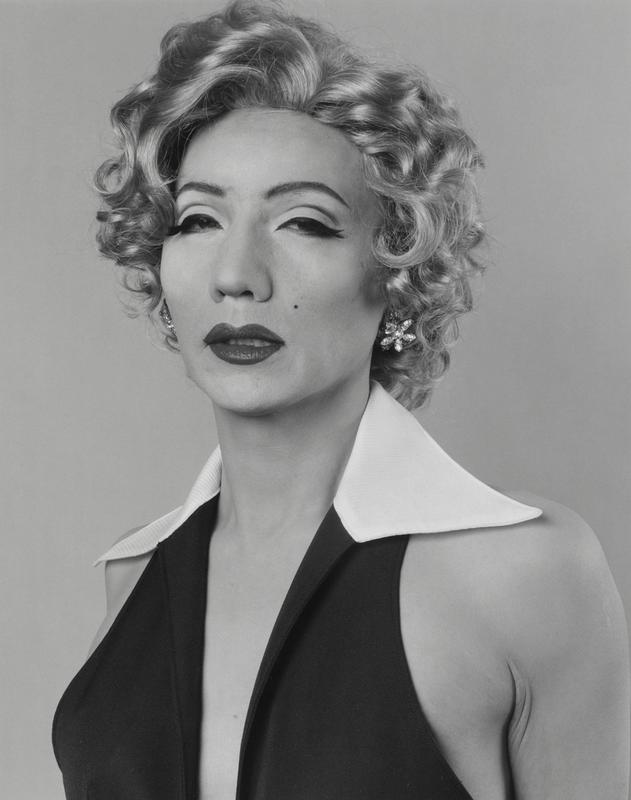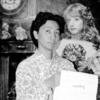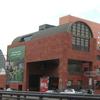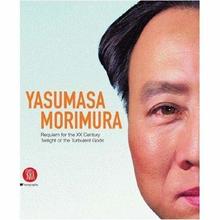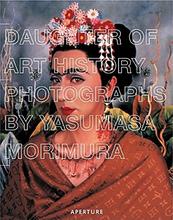More about Self-Portrait b/w / After Marilyn Monroe
- All
- Info
- Shop

Contributor
Morimura’s highly accurate impersonation of Marilyn Monroe is appropriated from a photograph by Gene Kornman... but honestly the Morimura version might be better.
The glower, the hair, the makeup, the dress, the mole. Everything about the photograph is so on point. Morimura is such a talented cross-dresser, it’s almost hard to picture the original image after seeing this one. He explains his inspiration as such: “Growing up in Japan, I had no chance to go to museums, especially to see Western Art. All I could find was what I could look up in art history books. I wanted to enter each painting to get a better understanding of art history.” And enter it he did. He entered it via Marilyn Monroe, Frida Kahlo, Salvador Dali, Audrey Hepburn, Liza Minnelli, Vermeer, Brigitte Bardot, etc. I mean the list goes on and on and on. There are very few corners of Western culture that Morimura hasn’t delved into at this point.
What’s so special about his approach though is that he gives these iconic photographs, paintings, and film stills a new energy. He “bring[s] them back to life as things of the present. A bit like reconstituting freeze-dried tofu and serving it up again to eat now,” as he says. By involving himself in these works, he adds a whole new unexpected angle that makes us rethink the context of the original image. Where was Morimura or his artistic predecessors when these images were being created? Why weren’t they cross-dressing and making all of the snooziest parts of art history fun? Probably because it took someone of Morimura’s artistic caliber to do something this amazing! It also just fits his personality. He explains: “My own self-definition includes this entire zone of possibilities. When I apply this way of thinking to making a self-portrait, it becomes what I call an ‘open self-portrait.’” In conclusion, Morimura’s Marilyn is a fire example of appropriation art that actually makes viewers rethink the OG image.
Sources
- "Self-Portrait B/W / After Marilyn Monroe." The Museum of Contemporary Art, Los Angeles. N.p., 2018. Web. 21 Aug. 2018.
- Shaw, Kurt. "Japanese Artist Toys With History, Gender In Warhol Exhibit." TribLive. N.p., 2013. Web. 21 Aug. 2018.
- "Yasumasa Morimura | Marilyn Monroe | Artsy." Artsy.net. N.p., 2018. Web. 21 Aug. 2018.
- "Yasumasa Morimura: Theater Of The Self - The Andy Warhol Museum." The Andy Warhol Museum. N.p., 2018. Web. 21 Aug. 2018.

